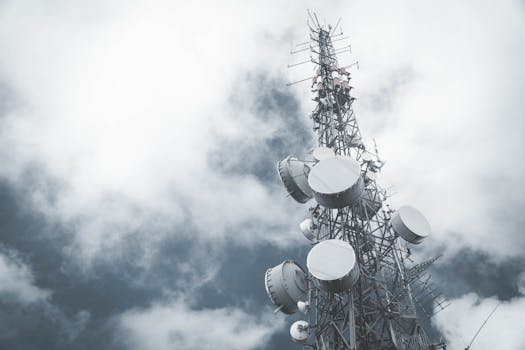
LEO Satellites: Revolutionizing the Telecom Industry with Low Earth Orbit Technology
LEO satellites, or Low Earth Orbit satellites, are a type of satellite that orbits the Earth at an altitude of around 160 to 2,000 kilometers. This relatively low altitude allows LEO satellites to provide high-speed, low-latency connectivity, making them an attractive option for a wide range of applications, including telecommunications, navigation, and Earth observation.
One of the primary advantages of LEO satellites is their ability to provide low-latency connectivity. Because they are closer to the Earth’s surface than traditional geostationary satellites, LEO satellites can offer latency as low as 20-30 milliseconds, compared to the 600-800 milliseconds experienced with geostationary satellites. This makes LEO satellites ideal for applications that require real-time communication, such as video conferencing, online gaming, and virtual reality.
How LEO Satellites Work

LEO satellites work by using a network of satellites in low Earth orbit to provide connectivity to users on the ground. Each satellite in the network acts as a repeater, amplifying and re-transmitting signals to other satellites in the network, as well as to users on the ground. This allows LEO satellites to provide global coverage, even in areas where traditional telecommunications infrastructure is lacking.
LEO satellites use a variety of frequencies to communicate with users on the ground, including Ku-band, Ka-band, and V-band. These frequencies offer high bandwidth and low latency, making them ideal for applications that require high-speed connectivity.
Applications of LEO Satellites

LEO satellites have a wide range of applications, including telecommunications, navigation, and Earth observation. In the telecom industry, LEO satellites are being used to provide high-speed, low-latency connectivity to remote and underserved areas. They are also being used to provide backup connectivity in areas where traditional telecommunications infrastructure is unreliable or unavailable.
In addition to telecommunications, LEO satellites are also being used for navigation and Earth observation. For example, the US Department of Defense uses LEO satellites to provide navigation and timing signals to military personnel and equipment. LEO satellites are also being used to monitor the Earth’s environment, including tracking weather patterns, monitoring ocean health, and detecting natural disasters.
Challenges and Opportunities

While LEO satellites offer many advantages, they also present several challenges. One of the primary challenges is the high cost of launching and maintaining a network of LEO satellites. Each satellite in the network must be launched into space, which can be expensive and logistically complex.
Another challenge facing LEO satellites is the risk of interference from other satellites and terrestrial systems. Because LEO satellites use a variety of frequencies to communicate with users on the ground, they can be susceptible to interference from other satellites and terrestrial systems that use the same frequencies.
Despite these challenges, LEO satellites offer many opportunities for growth and innovation. As the demand for high-speed, low-latency connectivity continues to grow, LEO satellites are likely to play an increasingly important role in the telecom industry. Additionally, advancements in technology are making it possible to launch and maintain LEO satellites at a lower cost, making them more accessible to a wider range of users.
See more:
